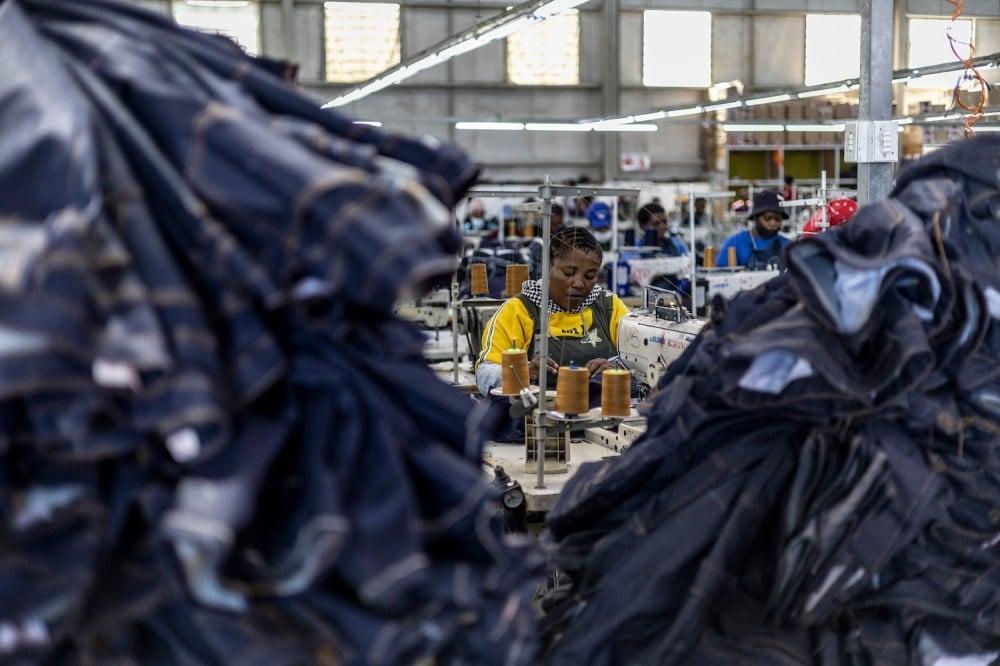By Faridah N Kulumba
Africa-Press – Uganda. Recently, the United States (U.S) president Donald Trump announced imposing tariffs on all goods entering the U.S. market from the rest of the rest of the world including Uganda. On the 5th of this month, the U.S. started collecting a 10 percent tariff on all imports. The tariffs do not even spare U.S. traditional allies. President Trump claims that a 10 percent tariff on all nations and much higher rates of up to 50% on individual countries will boost the US economy and protect jobs.
Rescue move
After the U.S. imposed 10 percent tariffs on all commodities entering the U.S market started taking effect, the European Union (EU) Ambassador to Uganda, Jan Sadek, announced that Ugandan products—excluding arms—can enter European markets tariff-free. Ambassador Sadek emphasized the need to meet strict sanitary and phytosanitary standards. “No tariffs. Uganda can export everything (but arms) to the EU without tariffs – but sanitary and phytosanitary standards must be respected,” he said. “With our new programme of UGX 32 billion, farmers and exporters of fresh fruits and vegetables will enhance their standards. More export,” he added.
Understanding the tariffs
Tariffs are taxes charged on goods bought from other countries. Typically, they are a percentage of a product’s value. For example, a 25 percent tariff on a USD 10 (£7.59) product would mean an additional USD 2.50 (£1.90) charge. All companies that bring the foreign goods into the country have to pay the tax to the government. However, firms can choose to pass on some or all of the cost to customers.
Higher tariffs
Starting April 9, Trump’s higher reciprocal tariff rates of 11 percent to 50 percent will come into force, with imports from the European Union facing a 20 percent tariff, and Chinese goods facing a 34 percent tariff. This brings Trump’s total new levies to China to 54 percent. China, the second biggest economy in the world, was hardest hit by Trump’s tariffs. Last week China responded to the U.S tariffs by announcing 34 percent retaliatory tariffs on US imports and filed a complaint with the World Trade Organisation. The actions of the Trump administration to impose tariffs and retaliatory measures by the world’s biggest economies have raised fears of a global trade war.
Reasons why Trump imposed tariffs
President Trump has always argued that the U.S should use tariffs to boost its economy. According to Trump, these tariffs will encourage US consumers to buy more American-made goods, increase the amount of tax raised and lead to huge levels of investment in the country. He intends to reduce the gap between the value of goods the US buys from other countries and the value of those it sells to them. He argues that America has been taken advantage of by “cheaters” and “pillaged” by foreigners. He also made other demands alongside tariffs. The first taxes announced during his current presidential term targeted China, Mexico and Canada. He said he wanted them to do more to stop migrants and illegal drugs reaching the US.
Other countries respond to Trump’s tariffs
EU chief Ursula von der Leyen warned that “the consequences will be dire for millions of people around the globe”. Canada’s Prime Minister Mark Carney said it was “essential to act with purpose and with force”. Italy’s Giorgia Meloni – a Trump ally – said the announcement was “wrong” but that she would work towards a deal with the U.S. to “prevent a trade war”. Micheál Martin of the Republic of Ireland said there was “no justification” for “deeply regrettable” tariffs which benefited “no-one”.Australia’s Anthony Albanese said “this is not the act of a friend”. South Korea’s acting president Han Duck-Soo said “the global trade war has become a reality”. Japan said its 24 percent levy was “extremely regrettable” and could violate the World Trade Organization and U.S.-Japan agreements.
How Uganda might be affected by Trump’s imposed tariffs
The 10 percent base tariffs t President Trump imposed on Ugandan exports to the U.S market will add costs and delays to businesses that raked USD 132.6m (Shs479.8 billion) in 2024.According to data set by the office of the Unites States Trade Representative underscores Uganda’s trading deficit with U.S last year. Uganda exported goods worth USD 132.6m against imports valued at USD 106.3m (Shs 384.6billion). Muhammad Kibe a business analyst in an interview with Africa-Press expressed worry over the U.S. imposed tariffs. He questioned how Uganda’s revenue plans could be affected by the new tariffs. He drew parallels with a situation two years ago when the Ministry had to revise its financing strategy after global credit markets became too expensive, undermining initial budget assumptions. According to the Observatory of Economic Complexity (OEC), a data visualization platform for international trade, Uganda’s top exports to the United States in 2023 included coffee (USD 58.2 million), vanilla (USD 16.2 million), and casein (USD 13.4 million). Over the past five years, Ugandan exports to the U.S. have grown at an average annual rate of 14.6 percent rising from USD 66.9 million in 2018 to USD132 million in 2023. Conversely, US exports to Uganda in 2023 totalled approximately USD 220 million, with aircraft parts topping the list at USD 24.7 million. There are warnings that prices will rise for the U.S. consumers and that the move could harm the world economy.
For More News And Analysis About Uganda Follow Africa-Press






